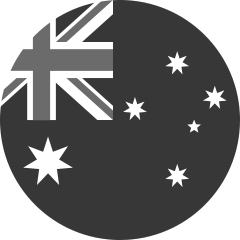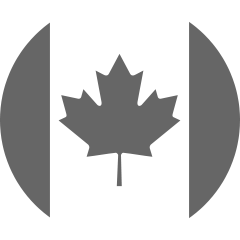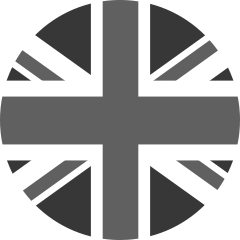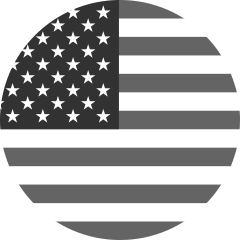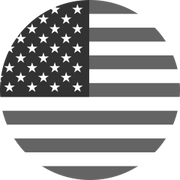Complete Triathlon Gear Checklist For Race Day
Triathlon Gear & Equipment Checklist for Race Day
Organizing your triathlon gear ahead of time will help you get in the right headspace on race day. Instead of worrying about whether you brought all the right things and rummaging through bags in a panic, you’ll be able to focus on the task ahead and get in the zone.
We’ve put together a comprehensive checklist to help triathletes prepare for race day, divided into four main components: the swim, cycle, run, as well as covering other items you may need. This list is perfect for triathlon beginners or seasoned veterans. It applies to any triathlete, at any skill level, for any race—including an Ironman.

The gear you will find on the list includes the necessary supplies for any triathlon, as well as tips to ensure everything is packed correctly and ready to go. The triathlon equipment checklist is also available as a printable PDF that you can use to stay organized while preparing for the event, so you have complete peace of mind on the big day.
Prepping your gear
When gathering all your triathlon supplies, lay them out on the floor in front of you. That way, you have an easy visual of each item to see what you have and what might be missing. Triple-check your gear list to make sure you have everything you need before packing it up.
Triathlon Gear Checklist
Swim
Swim caps (2)
Goggles (2)
Tri suit
Wetsuit
Anti-chafing and blister prevention products (such as Body Glide)
Sandals
Bike
T1 towel
Bike shoes
Race belt
Bike helmet/TT helmet
Sunglasses
GPS bike computer head unit
Road bike/TT bike
Bike water bottle (already filled)
Chamois cream (optional)
Socks (optional)
Rubber bands (optional)
Cycling gloves (weather dependent)
Arm warmers (weather dependent)
Cycling gilet (weather dependent)
Rain jacket (weather dependent)
Flat kit
Multi-tool
Run
T2 towel
Quick lace running shoes
Headlamp
Extra running kit options
Cap or visor (optional)
Socks (optional)
Race morning food
Warm clothing for the morning
Smartwatch or watch
Warmup runners
Electrolyte drink(s)
Transition bags, boxes, or bins
Plastic bags for liquids and gels
Larger plastic or reusable bag for damp items at the end of the race
Additional water bottles (already filled, so you don’t have to fill them at the race)
Electrical tape (can be used to tape nutrition to yourself or your bike)
Hair elastics (if applicable)
Inhalers (if applicable)
Medication (if applicable)
Sunscreen (optional)
Talcum powder (optional)
Vaseline (optional)
Post-race clothes
Post-race towel (optional)
Deodorant (optional)
Download the PDF and print it for race day
Now that you’ve got all your gear together let’s talk about packing it, keeping it organized, and making sure it gets to the race.
The best approach to packing your gear
The best approach to packing your triathlon gear is to pack based on transitions and when you’ll be needing each bundle of items. There are many Tri bags out there, and most will be large enough to fit all your gear.
Many triathletes will have a large Tri bag, a wetsuit bag, a shoe bag, a drawstring bag, and a large plastic or reusable bag (for damp items after the race). The large Tri bags will sometimes eliminate the need for some of the bags listed. For example, they may have a special compartment for your wetsuit or a section designed specifically for shoes. Either way, it doesn’t hurt to have extra bags to carry your gear within your main Tri bag to stay organized.

As a baseline, we recommend one large Tri bag, a drawstring bag for personalized nutrition or pre-race clothing, and an optional third bag for post-race clothing and necessities.
Organizing your gear by transitions
Some races will provide boxes or ask you to bring your own to put your gear in during transition. Others may require you to place all your race gear in bags, while others may not provide you with boxes or bags at all. Either way, packing in a way that anticipates transitions, as well as pre and post-race necessities, is a great approach.
When packing your triathlon gear, break it down in the following order:
-
1. Pre-swim
-
2. Bike gear
-
3. Run gear
1. Pre-swim
Your pre-swim pack should include all the necessary swim gear, including your wetsuit, Tri suit, and lubricating products such as Body Glide to help prevent chafing and blisters. You will also want to pack two swim caps and two pairs of goggles in case of a gear malfunction before the race. Consider packing a pair of FORM Smart Swim Goggles that display your swim time and distance in real-time to help with your performance during this leg of the race.
It can also be helpful to pack a pair of sandals or training running shoes in this bundle if you need to walk down to the water before the race for any reason. The clothes you arrive at the race in will typically go in this pack as well. These can be used as your dry clothes after the race unless the weather changes drastically throughout the day and you need a different set of clothes after the race.
2. Bike gear
There will be a flurry of activity around you as you transition from swim to bike. You’ll jog through a sea of bikes before locating yours, so take a mental note of a nearby landmark before the race to help you remember its location. Once you’re there, having a well-organized transition area will help speed things up and make for a smoother transition.
The essentials for your bike gear bundle include your T1 towel, bike helmet or TT helmet, sunglasses, bike, GPS bike computer head unit, race belt, bike shoes, water bottle, nutrition, multi-tool, and flat kit. Your flat kit should include inner tubes, CO2 Inflator and adapter, patches, and tire levers.

Optional items for this bundle include sunscreen, chamois cream, electrical tape, rubber bands if you’ll be doing a flying mount, and cycling gloves, arm warmers, cycling gilet, and a rain jacket should the weather be cold or wet. These warmer items can also be helpful during warmup. Many triathletes forego socks when they transition from swim to bike, but you can pack those in this transition bag if you prefer cycling in socks. Consider adding some talcum powder to their insides to help get them on faster.
3. Run gear
Being organized for transition two will also help with your race time and speed up your transition. This bundle should include your T2 towel, quick lace running shoes, extra running kit, and fuel in the form of nutrition or energy gels.
Some optional items include a new pair of socks with talcum powder in them to make it easier to get them on, vaseline to put on the soles of your running shoes to make them easier to slip on, a cap or visor, a different pair of sunglasses should you prefer a different pair for the run, sunscreen if it’s hot out, and a headlamp depending on the time of year.
Other bags or bins
Bringing your own hydration and nutrition is especially handy if you don’t want to rely on on-course nutrition. Some triathlons will give you a Special Foods bag where you can place your nutrition, gels, solid foods, and additional water bottles. Using the Special Foods bags to sort your hydration and nutrition may work for you, but if you prefer to have them packed with each of the bundles listed above, we recommend placing them in a plastic bag to avoid spills. This goes for any liquid or gel you’ll be needing before, during, or after the race—for example, suit lube, sunscreen, vaseline, talcum powder, etc.
Getting the gear to the race
Once you’ve got your gear organized and packed up properly, keep the bags by the front door. That way, you will not be scrambling on race day and can focus on your morning routine. Whether that be coffee, nutrition, meditation, breathing techniques, visualization, stretching, or all of the above, having your gear ready to go by the front door keeps your morning open for getting in the right headspace for the race.
Remember, you cannot accept any outside assistance during race day, so it is essential to be self-sufficient by packing everything you need to get you through the day.
If you’re currently training for a triathlon, check out our FORM goggles. They have a smart display built into the goggles that shows split times, distance, pace, and more right on the lens of your goggles. Add these to your triathlon gear list and get real-time data during the race to assist your performance.

